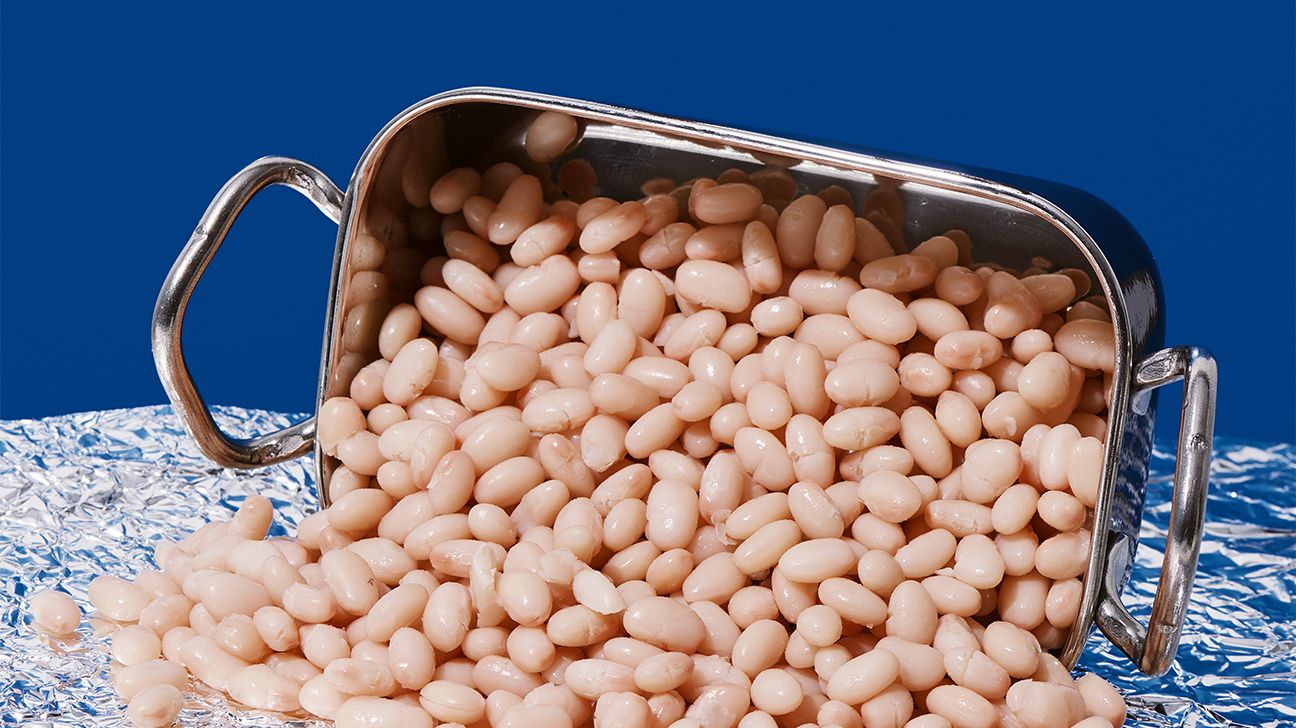Beans are damn good for you. But they’re also loaded with naturally occurring fibers that can be tough for your GI tract to break down. The result? Hellacious farts.
Here’s the full scoop on this musical fruit and exactly why it makes us toot.
Beans and legumes contain complex fibers called oligosaccharides. Our bodies don’t have the enzymes to break these sugars down, so they coast along undigested until they arrive in the intestines.
There, the oligosaccharides are broken down by hungry gut bacteria. The bacteria feast on these sugars and release gas (we like to think of it as little burps) in the form of noxious gases like methane and sulfur.
The gases build until they need to be released, which results in farts.
Veggies like broccoli, cauliflower, cabbage, and brussels sprouts give you the cheek squeaks for the exact same reason: They’re full of oligosaccharides, too. (The more you know!)

Science hasn’t given us an official ranked list of the fartiest beans. But the expert consensus seems to be that the more fiber a type of bean has, the more likely it is to really get your horn tooting.
Some very limited research backs this up for fiber all-stars like pinto and navy beans. But you might also notice the same kind of problem for other roughage-packed picks like lentils and split peas.
Beans like chickpeas, black beans, and kidney beans are a little lower on the fiber totem pole, so they might be less problematic in the pop tart department.
What about baked beans? They’re notorious gas-causers too, and not just because they’re made with pinto beans. Beer, a common ingredient in baked beans, also contains compounds that fill your system up with an extra dose of air.
So going all in on a bowl of baked beans is practically guaranteed to give you a booty bomb.
Good news: It doesn’t have to be a losing battle. There are a bunch of ways to make beans less gassy and help your system handle them a little bit better.
Soak any dried beans
If you’re going the dried bean route, start by soaking them overnight before cooking. That’ll break down some of the nondigestible fibers ahead of time, plus it’ll help the beans cook faster.
Adding a pinch of baking soda to the soaking liquid can help to sort of pre-digest some of those oligosaccharides too.
If you don’t have the time to do an overnight soak, try the faster hot soak method. Basically, you bring a pound of beans and 10 cups of water to a boil and keep the boil going for 2 to 3 minutes. Then turn off the heat and let the beans sit, covered, for 4 hours before you cook them.
Add acidic ingredients at the end
Planning on cooking your beans with tomatoes, wine, or lemon juice? Some people swear by waiting to add acidic ingredients until their beans are fully cooked. The thinking goes that acid-heavy foods stop the beans from getting tender, and beans that are less tender are hard to digest.
Take a digestive enzyme
A dose of the over-the-counter (OTC) med Beano, taken before eating, delivers the missing digestive enzymes you need, helping your GI tract do a speedier, less gassy bean breakdown. Seriously, science says that the stuff works.
Or try digestion-boosting ingredients
Experiment with adding kombu, a dried seaweed traditionally used in Japanese broths, to your beans while they simmer. It’s thought to contain enzymes that can help break down beans’ fart-causing fibers before you eat them.
Another idea: Have a spoonful of fennel seeds after you eat. The crunchy, licorice-flavored seeds contain compounds that are thought to promote healthy gut bacteria and fight irritating inflammation, which might help with gas and bloating.
It’s a far from proven solution, but they’ve been used as a traditional digestion booster for centuries in India, the Middle East, and the Mediterranean. And there’s no real downside to trying.
Up your intake slooowly
Going all in on a tub of hummus probably isn’t gonna feel good if you’re not a regular bean eater. Remember, beans are packed with fiber — and that’s added to your diet in small, gradual doses.
If you’ve recently vowed to get more beans in your diet, try adding just half a cup per day for a full week to give your system time to adjust. Once that seems tolerable, add another half cup for another week, and so on. Within a couple weeks you’ll likely notice a serious reduction in gas.
And while you’re upping your fiber, be sure to drink plenty of water. Too little liquid can cause food to move more slowly through your digestive tract, which can lead to uncomfortable gas buildup.
Beans are packed with hard-to-digest fibers that can cause gas, especially if you’re not used to eating them.
Strategic soaking and cooking methods can definitely help make them less farty. But you can also try taking a digestive enzyme before eating or make an effort to up your bean intake gradually to give your body time to adjust.

